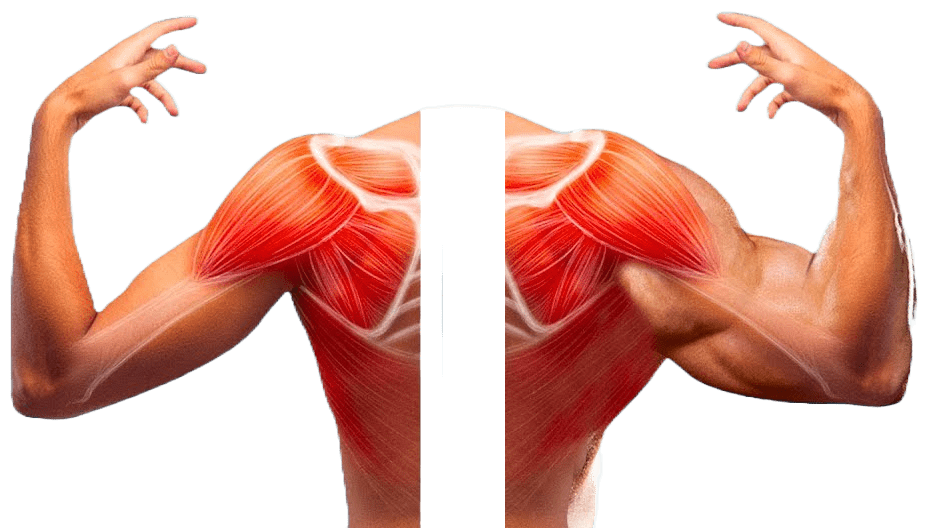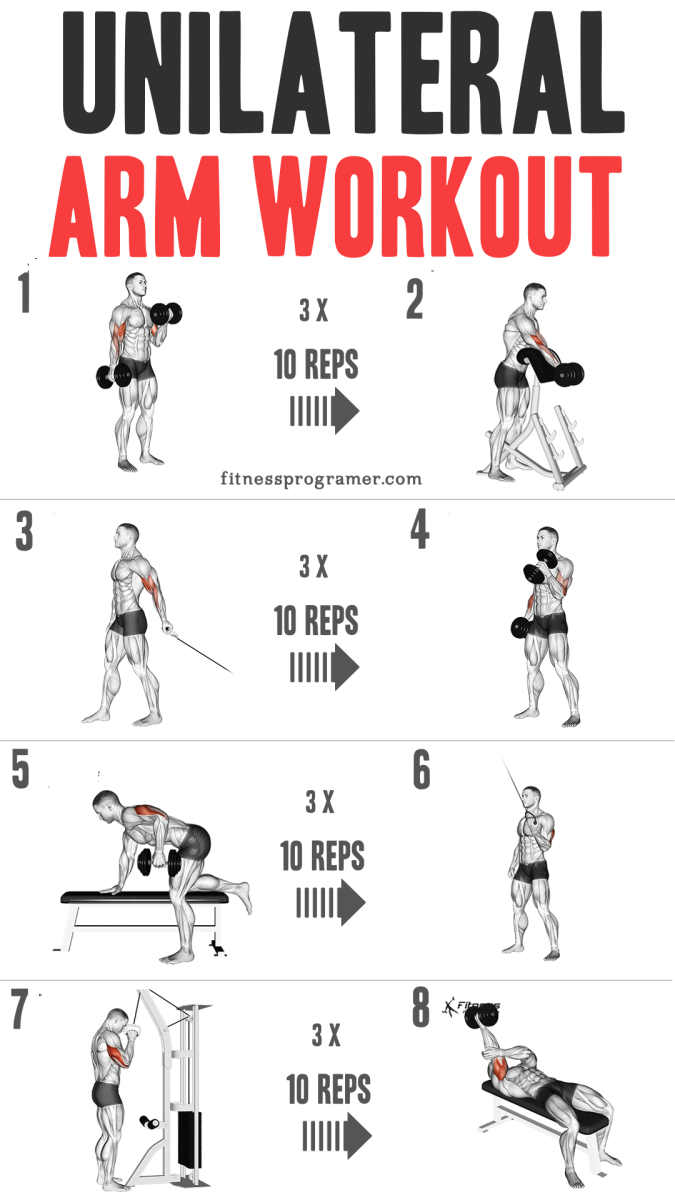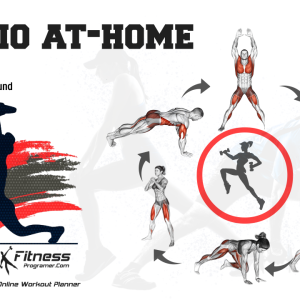Contents
- Definition of muscle asymmetry (Muscle Imbalance)
- Common reasons for muscle asymmetry
- How muscle growth can lead to asymmetry
- Is it normal to have one bicep bigger than the other?
- Why is my left bicep smaller
- Sports and Muscular Imbalances: The Impact of Uneven Training
- When to Seek Medical Advice
- How to Fix Muscle Asymmetry
- Conclusion
Having one arm that is noticeably larger than the other is a common problem that many people experience. This issue can be both frustrating and embarrassing, especially if it affects your appearance and confidence. While this issue is typically more noticeable in the biceps, it can also occur in other muscle groups such as the chest, shoulders, or legs.
This article will delve into these potential causes of uneven muscle development in more detail and provide tips and exercises to help address and correct muscular imbalances in the biceps. By incorporating these tips into your workout routine and being mindful of your habits, you can promote overall arm strength and symmetry.
Definition of muscle asymmetry (Muscle Imbalance)
Muscle asymmetry refers to a noticeable difference in size, strength, or shape between two corresponding muscles on opposite sides of the body. It is a common occurrence among individuals who engage in physical activities, especially weightlifting and bodybuilding.
Common reasons for muscle asymmetry
There are several factors that can contribute to muscle asymmetry, including:
- Genetics: Genetics play a significant role in determining muscle size, shape, and strength. Some people may naturally have one muscle that is larger or stronger than the other.
- Poor form during exercises: Improper technique during weightlifting or other physical activities can cause uneven stress on muscles, leading to imbalances.
- Training habits: Uneven training volume, frequency, and intensity can cause muscle asymmetry. For example, overusing the dominant hand or leg during exercises can lead to imbalances.
- Injury or illness: Muscular injuries or illnesses can lead to muscle asymmetry, particularly if one muscle group is immobilized for an extended period.
By understanding the common reasons for muscle asymmetry, individuals can take steps to address the issue and prevent further imbalances.
How muscle growth can lead to asymmetry
Muscle growth can lead to asymmetry if one muscle group is consistently worked more than the other. For example, if an individual always favors their dominant arm during weightlifting exercises, their dominant arm’s muscles will become stronger and larger than their non-dominant arm’s muscles, leading to asymmetry.
Additionally, some individuals may experience asymmetry due to differences in muscle fiber composition. For example, if an individual has a higher percentage of fast-twitch muscle fibers in one muscle group, that muscle group may grow larger and stronger than the other muscle group, leading to asymmetry.
Overall, while muscle growth is essential for building strength and improving physical performance, it is important to ensure that both sides of the body are worked evenly to prevent asymmetry.
Is it normal to have one bicep bigger than the other?
It is common for muscles in the body to be asymmetrical, including the biceps, triceps, chest, and shoulders. However, achieving perfect symmetry may not always be possible, and some degree of asymmetry is natural.
Bodybuilders who try to be extremely symmetrical too have differences in their right and left side of the body parts. Even many sports persons like tennis players, badminton players, cricketers have their strong sided body parts because they are either left handed or right handed. No matter how much they train to keep themselves balanced, there will always be some difference.
While some asymmetry is normal, significant size differences between the two biceps may indicate an underlying issue that needs to be addressed.
By focusing on strengthening the weaker side, you can help to reduce muscle imbalances and achieve greater overall balance and symmetry.

Why is my left bicep smaller
There are several potential causes of uneven biceps development. The most common reasons are hand dominance, repetitive motions, injury or surgery, training, and genetics.
Hand dominance refers to the consistent use of one hand over the other, which can lead to overdevelopment of the dominant arm. Repetitive motions such as typing, carrying a heavy bag, or holding a child can also cause uneven muscle development. Injuries or surgeries to one arm can lead to muscle atrophy or loss of strength, resulting in one arm being smaller or weaker than the other.
Training methods can also contribute to muscular imbalances if you focus too much on one arm or muscle group, leading to overuse and overdevelopment.
1. Dominant Hand:
One of the most common reasons why your right bicep may be bigger than your left is due to the dominant hand. If you’re right-handed, you’re more likely to use your right arm for daily activities, leading to more frequent and intense workouts. This can cause the right bicep to develop more muscle mass compared to the left.
2. Repetitive Movements:
Another factor that can contribute to muscular imbalances is repetitive movements. If you perform activities that involve your right arm more often, such as sports like tennis or baseball, you’re more likely to develop a stronger right bicep.
3. Injury or Surgery:
If you’ve had an injury or surgery that affects your left arm, you may end up using it less frequently or with less intensity, leading to weaker muscles. This can result in an imbalance between the two arms.
4. Training:
Unequal training of your biceps can also lead to muscular imbalances. For example, if you’ve been using a heavier weight on your right arm or doing more reps with your right arm, it can cause your right bicep to develop more muscle mass than your left.
5. Genetics:
Finally, genetics can also play a role in the development of muscular imbalances. Some people may be predisposed to having stronger muscles on one side of their body, and this can be influenced by factors such as limb length and bone structure.
It’s essential to address muscular imbalances to avoid potential problems such as chronic pain, injuries, and poor posture. By incorporating exercises that target both arms equally and gradually increasing the weight lifted on the weaker arm, you can help correct muscular imbalances in your biceps.
Sports and Muscular Imbalances: The Impact of Uneven Training
Sports and physical activity are great for overall health and fitness. However, they can also contribute to muscular imbalances, especially if you engage in activities that use one arm more than the other. In this topic, we’ll explore how sports and physical activity can impact muscular imbalances and what you can do to avoid them.
Tennis:
Tennis players often develop muscular imbalances because they use their dominant hand more frequently to hit the ball. This can lead to a stronger arm on one side, which can result in muscular imbalances in the biceps. To avoid this, it’s important to use both arms equally when practicing and playing tennis. Consider using a training aid to help you balance your arm usage.
Baseball:
Baseball players are also at risk of developing muscular imbalances due to the repetitive throwing motion. Pitchers, in particular, use their dominant arm frequently, leading to a stronger arm on one side. To avoid this, it’s important to engage in shoulder-strengthening exercises that target both arms equally.
Golf:
Golfers can develop muscular imbalances due to the repetitive swinging motion. Like tennis players, golfers also tend to use their dominant arm more frequently, leading to stronger muscles on one side. To avoid this, try to use both arms equally when swinging the golf club. Consider engaging in exercises that target the muscles used in golf swings to help balance out the muscles on both arms.
Weightlifting:
Uneven weightlifting can also contribute to muscular imbalances in the biceps. For example, if you’re right-handed, you may be more likely to lift heavier weights with your right arm, leading to a stronger arm on one side. To avoid this, it’s important to engage in exercises that target both arms equally and to gradually increase the weight lifted on the weaker arm.
In summary, certain sports and physical activities can contribute to muscular imbalances, especially if you use one arm more frequently than the other.
When to Seek Medical Advice
While muscle asymmetry is not always a cause for concern, there are times when it is important to seek medical advice. Here are some situations when medical advice is necessary:
Muscle asymmetry accompanied by pain or discomfort: If muscle asymmetry is accompanied by pain or discomfort, it may be a sign of an underlying medical condition that requires medical attention. Pain or discomfort may indicate an injury, inflammation, or other medical condition that needs to be addressed by a healthcare professional.
Sudden muscle asymmetry: Sudden muscle asymmetry can be a sign of a serious medical condition, such as a stroke or nerve damage, and should be evaluated by a healthcare professional immediately. If muscle asymmetry is sudden or severe, it is important to seek medical attention right away.
How to Fix Muscle Asymmetry
To avoid this, it’s important to engage in exercises that target both arms equally, gradually increase the weight lifted on the weaker arm, and use training aids to help balance out your arm usage. By taking these steps, you can help prevent muscular imbalances and avoid potential problems down the road.
1- Corrective Exercises
Corrective exercises can help address muscle imbalances by targeting specific muscle groups and correcting any weaknesses or asymmetries. These exercises can include unilateral movements, which work one side of the body at a time, or isolation exercises that target specific muscle groups. For example, if an individual has asymmetry in their biceps, they may perform unilateral preacher curls or concentration curls to target the weaker side and correct the imbalance. (Unilateral Exercises: What Are They and Why You Should Be Doing Them)
Example Unilateral Arm Workout
Biceps:
- Dumbbell Curl 3 x 10
- One-Arm Cable Biceps Curl 3 x 10
- Preacher Curl 3 x 10
- Hammer Curl 3 x 10
Triceps:
- Dumbbell Kickback 3 x 10
- One Arm Triceps Pushdown 3 x 10
- One Arm Reverse Pushdown 3 x 10
2- Balancing Training Volume
Balancing training volume between both sides of the body is essential for preventing muscle asymmetry. This can be achieved by using weights that are appropriate for both sides of the body, performing the same number of repetitions and sets for each side, and alternating between dominant and non-dominant sides during exercises.
3- Adjusting Training Frequency
Adjusting training frequency can also help prevent muscle asymmetry. For example, if an individual is training their dominant arm more frequently than their non-dominant arm, they can adjust their training schedule to work each arm equally. This can be achieved by incorporating more exercises for the non-dominant arm or reducing the frequency of training for the dominant arm.
4- Consulting with a Fitness Professional
Consulting with a fitness professional, such as a personal trainer or physical therapist, can help individuals develop a personalized plan to address muscle asymmetry. A fitness professional can assess an individual’s muscle imbalances, create a customized training program to correct any asymmetries, and provide guidance and feedback to ensure proper form and technique during exercises.
Conclusion
Muscle asymmetry is a common issue that can result from a variety of factors, including genetics, poor form during exercise, training habits, and injury or illness. While some degree of asymmetry is normal, significant imbalances can lead to decreased physical performance and an increased risk of injury.
It is important to address muscle asymmetry by incorporating corrective exercises, balancing training volume, adjusting training frequency, and consulting with a fitness professional when necessary. By taking steps to correct muscle imbalances, individuals can improve their physical performance, reduce their risk of injury, and achieve optimal muscle symmetry.




